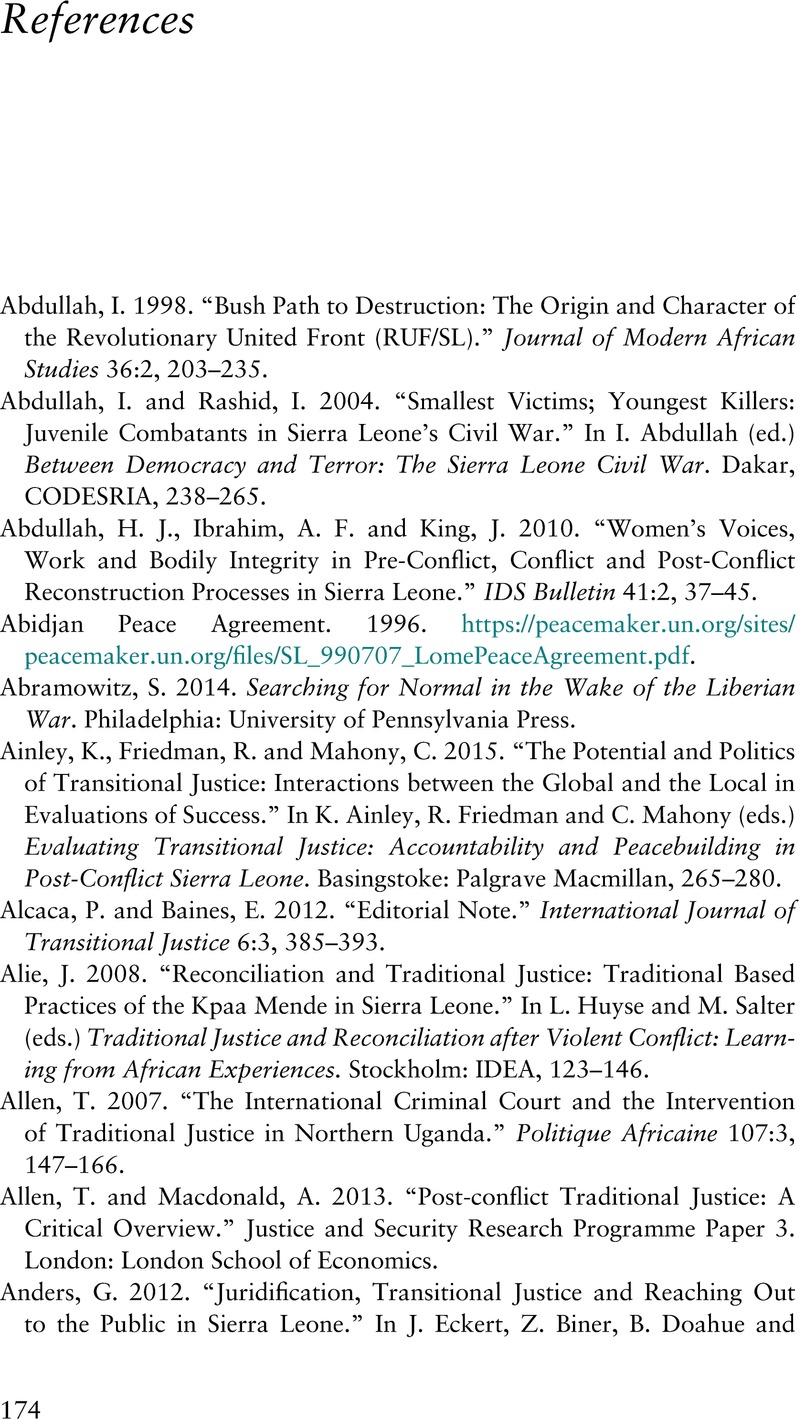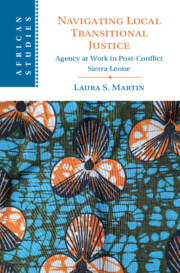Book contents
- Navigating Local Transitional Justice
- African Studies Series
- Navigating Local Transitional Justice
- Copyright page
- Dedication
- Contents
- Maps
- Acknowledgments
- 1 Agency in Times of Transitional Justice
- 2 Navigating Violence, Peace and Justice
- 3 Deconstructing Fambul Tok’s Discourse and Practice
- 4 Participant Experiences with Fambul Tok’s Program
- 5 Unrecognized Mechanisms, Normality and Everyday Realities in Transition
- 6 Activating Justice
- Appendix A: Informant Interview List
- References
- Index
- African Studies Series
- References
References
Published online by Cambridge University Press: 13 July 2023
- Navigating Local Transitional Justice
- African Studies Series
- Navigating Local Transitional Justice
- Copyright page
- Dedication
- Contents
- Maps
- Acknowledgments
- 1 Agency in Times of Transitional Justice
- 2 Navigating Violence, Peace and Justice
- 3 Deconstructing Fambul Tok’s Discourse and Practice
- 4 Participant Experiences with Fambul Tok’s Program
- 5 Unrecognized Mechanisms, Normality and Everyday Realities in Transition
- 6 Activating Justice
- Appendix A: Informant Interview List
- References
- Index
- African Studies Series
- References
Summary

- Type
- Chapter
- Information
- Navigating Local Transitional JusticeAgency at Work in Post-Conflict Sierra Leone, pp. 174 - 192Publisher: Cambridge University PressPrint publication year: 2023



